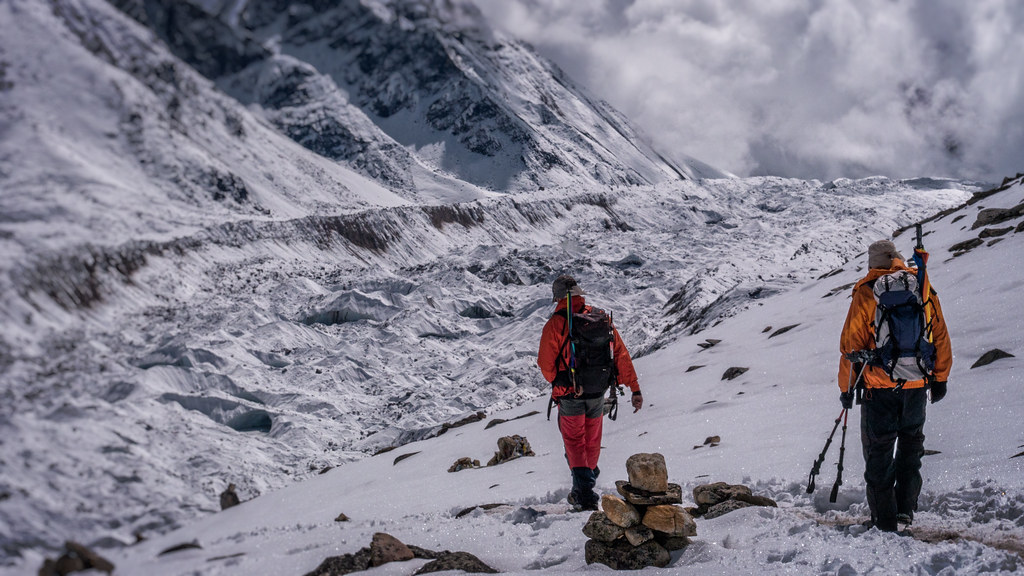Nepal, with its majestic Himalayan ranges, stands as a haven for adventure enthusiasts seeking the thrill of high-altitude mountaineering. Among the myriad peaks that adorn this rugged terrain, seven stand out as must-climb summits, offering a unique blend of challenge and breathtaking beauty. For those with a passion for exploration, these peaks beckon, promising an unparalleled mountaineering experience in the heart of the Himalayas.
1. Mount Everest: The Crown Jewel of the Himalayas
No list of must-climb peaks in Nepal is complete without mentioning the towering giant – Mount Everest. Standing at a staggering 29,032 feet (8,848 meters), Everest lures adventurers with the ultimate challenge of reaching the world’s highest summit. The journey is not only a physical test but a spiritual and mental odyssey, as climbers navigate through the Khumbu Icefall, the treacherous Hillary Step, and the infamous Death Zone.
2. Annapurna I: The Goddess of Harvest
Annapurna I, at 26,545 feet (8,091 meters), is the 10th highest peak globally and offers a diverse climbing experience. The Annapurna Massif encompasses several peaks, each presenting its own set of challenges. Climbers are rewarded with panoramic views of the Annapurna range, Machapuchare, and Dhaulagiri, creating an immersive Himalayan tapestry.
3. Kanchenjunga: The Five Treasures of Snow
Kanchenjunga, the third-highest peak globally at 28,169 feet (8,586 meters), is revered not only for its height but also for its cultural significance. Climbers traverse through diverse landscapes, from subtropical forests to alpine meadows, encountering the rich biodiversity of the Kanchenjunga Conservation Area. The climb is a harmonious blend of adventure and ecological exploration.
4. Lhotse: The South Peak of Everest
Adjacent to Mount Everest, Lhotse stands tall at 27,940 feet (8,516 meters). Climbing Lhotse presents an enticing challenge for those who have conquered Everest or aspire to do so. The climb involves navigating the challenging Lhotse Face and the daunting South Col, offering a unique perspective of the Everest Massif.
5. Makalu: The Great Black
Makalu, at 27,838 feet (8,485 meters), is an awe-inspiring pyramid of ice and rock. Climbers embarking on the Makalu ascent navigate through the Barun Valley, encountering pristine landscapes and unique cultural experiences. The climb itself is a test of endurance, with steep pitches and technical sections that demand a high level of mountaineering skill.
6. Cho Oyu: The Turquoise Goddess
Cho Oyu, at 26,864 feet (8,188 meters), is known for its gentle slopes and relatively straightforward ascent. However, don’t let its accessibility fool you; the climb requires acclimatization, stamina, and resilience. Cho Oyu provides an excellent platform for climbers aspiring to conquer 8,000-meter peaks without the extreme technical challenges of some of its counterparts.
7. Lobuche Peak: A Gateway to Everest Region
While not towering at the heights of its neighboring giants, Lobuche Peak, at 20,075 feet (6,119 meters), offers a challenging yet accessible climb. Often used as an acclimatization trek for those gearing up for Everest, Lobuche provides stunning views of the Everest Massif and the Khumbu Valley. Climbers experience the thrill of high-altitude climbing while soaking in the beauty of the surrounding Himalayan landscape.
Challenges and Rewards of Lobuche Peak Climbing
Challenging Ascents:
Climbing Lobuche Peak involves navigating challenging terrain, including steep ascents and technical sections. The climb requires proficiency in using climbing equipment and techniques, providing an excellent learning ground for aspiring mountaineers.
Acclimatization Opportunities:
Lobuche Peak Climbing serves as a strategic acclimatization trek for those with Everest aspirations. Climbers gradually adapt to the high-altitude conditions, preparing their bodies for more demanding challenges in the Everest region.
Panoramic Views:
Despite its lower elevation compared to its illustrious neighbors, Lobuche Peak rewards climbers with breathtaking panoramic views. The summit offers a unique perspective of Everest, Lhotse, Nuptse, and the surrounding peaks, creating memories that linger long after the descent.
Cultural Encounters:
The trek to Lobuche introduces climbers to the rich Sherpa culture and traditions of the Everest region. As climbers make their way through picturesque villages, they experience the warmth and hospitality of the local communities, adding a cultural dimension to their mountaineering adventure.
Conclusion: A Symphony of Peaks in the Himalayan Symphony
Nepal’s Himalayan peaks stand as a symphony of challenges and triumphs, inviting adventurers to test their mettle in one of the most awe-inspiring landscapes on Earth. From the towering heights of Everest to the cultural tapestry surrounding peaks like Lobuche, each climb offers a unique experience, blending physical endurance with the spiritual richness of the Himalayas. As climbers embark on these expeditions, they become part of a legacy that transcends the individual, contributing to the lore of the magnificent peaks that grace the Nepalese Himalayas.




